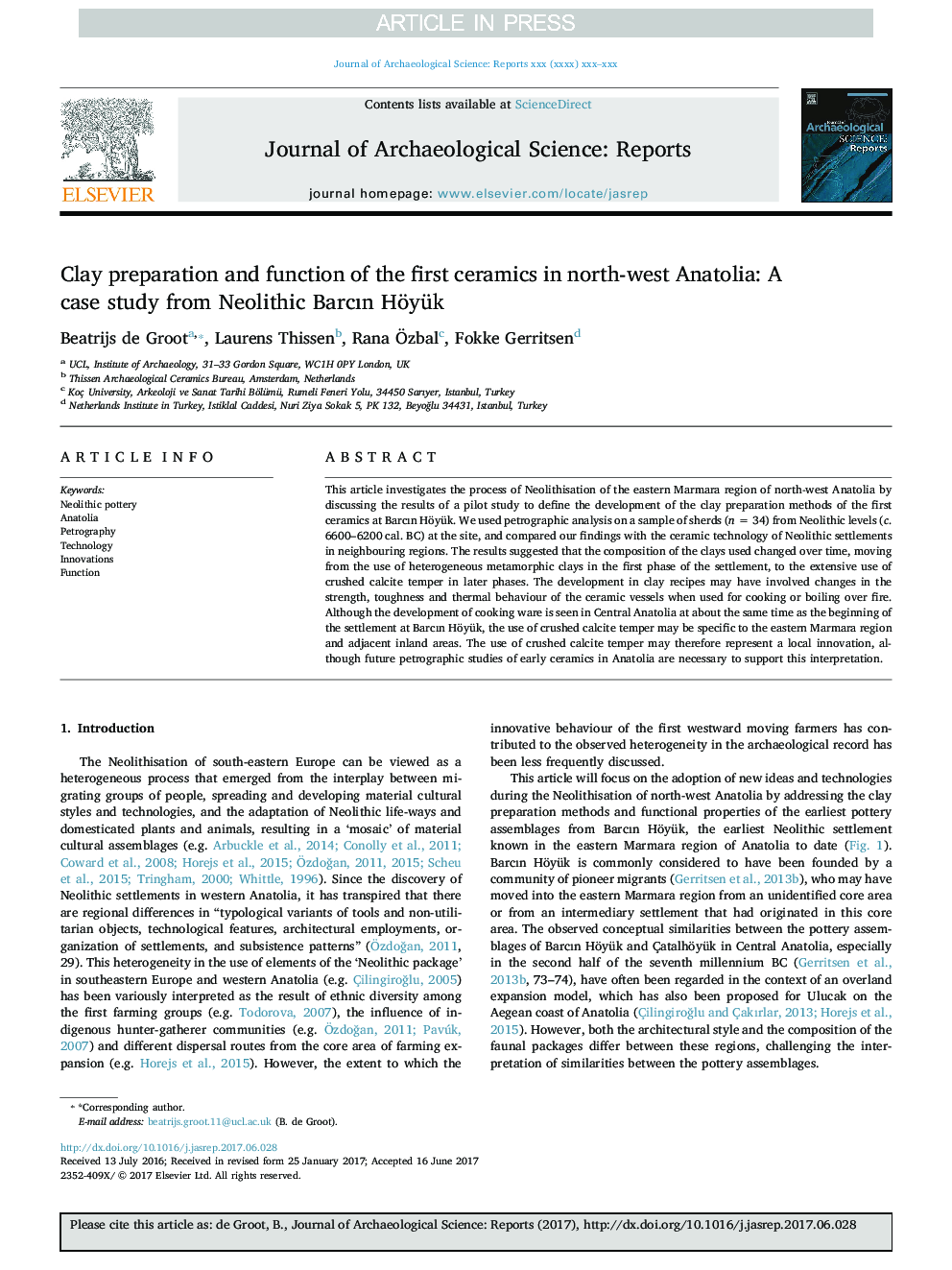| Article ID | Journal | Published Year | Pages | File Type |
|---|---|---|---|---|
| 7444987 | Journal of Archaeological Science: Reports | 2017 | 11 Pages |
Abstract
This article investigates the process of Neolithisation of the eastern Marmara region of north-west Anatolia by discussing the results of a pilot study to define the development of the clay preparation methods of the first ceramics at Barcın Höyük. We used petrographic analysis on a sample of sherds (n = 34) from Neolithic levels (c. 6600-6200 cal. BC) at the site, and compared our findings with the ceramic technology of Neolithic settlements in neighbouring regions. The results suggested that the composition of the clays used changed over time, moving from the use of heterogeneous metamorphic clays in the first phase of the settlement, to the extensive use of crushed calcite temper in later phases. The development in clay recipes may have involved changes in the strength, toughness and thermal behaviour of the ceramic vessels when used for cooking or boiling over fire. Although the development of cooking ware is seen in Central Anatolia at about the same time as the beginning of the settlement at Barcın Höyük, the use of crushed calcite temper may be specific to the eastern Marmara region and adjacent inland areas. The use of crushed calcite temper may therefore represent a local innovation, although future petrographic studies of early ceramics in Anatolia are necessary to support this interpretation.
Related Topics
Social Sciences and Humanities
Arts and Humanities
History
Authors
Beatrijs de Groot, Laurens Thissen, Rana Ãzbal, Fokke Gerritsen,
